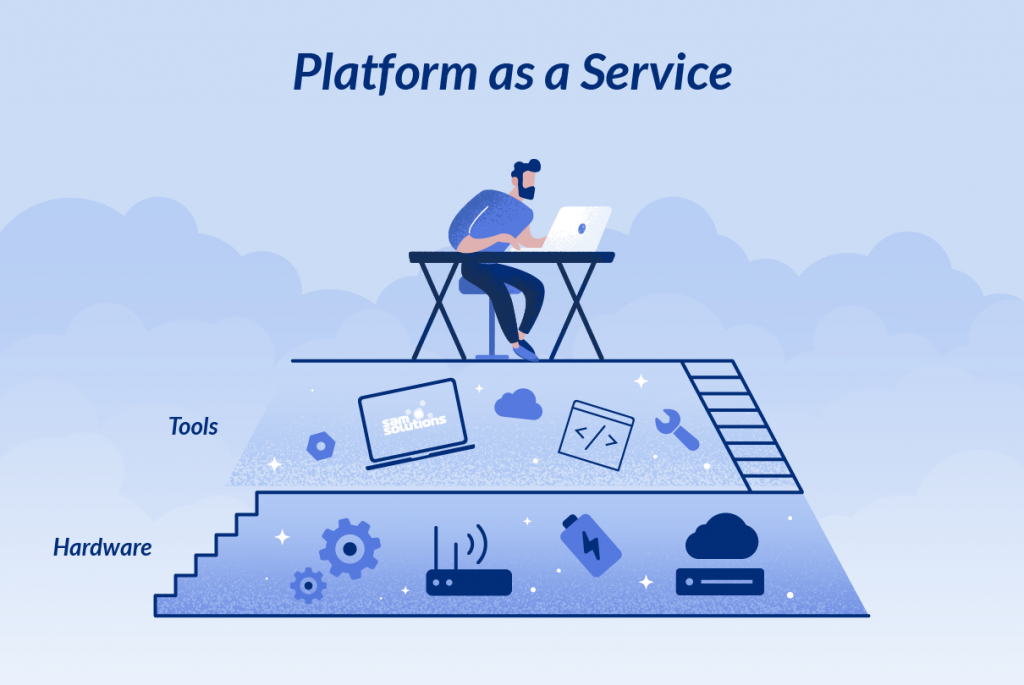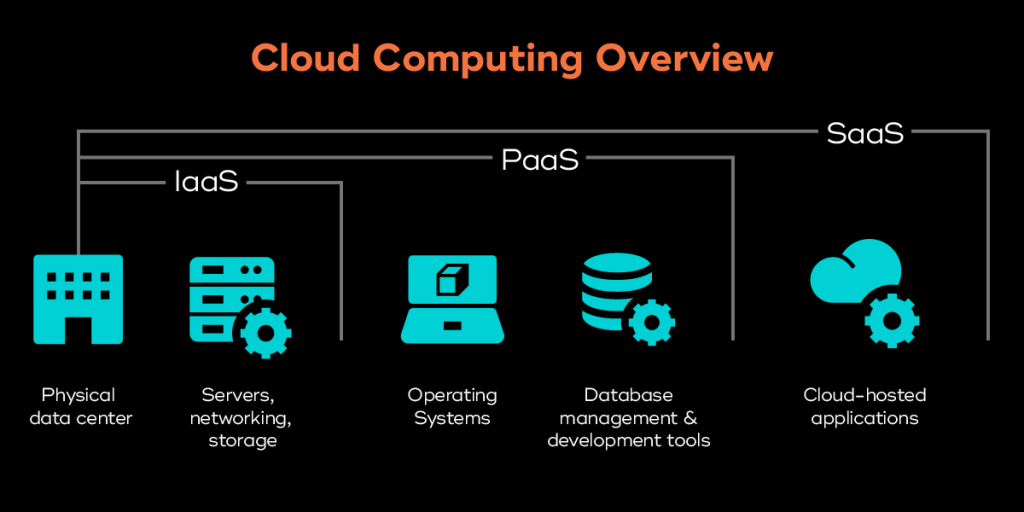What Is Platform-as-a-Service (Paas)?

In the rapidly evolving landscape of cloud computing, Platform-as-a-Service (PaaS) has emerged as a crucial model that enables businesses to streamline application development and deployment. PaaS provides a comprehensive environment that allows developers to build, test, and deploy applications without the complexity of managing underlying infrastructure. This article delves into what PaaS is, the various types of PaaS available, and the diverse use cases that make it a pivotal component in modern IT strategies.
What Is Platform-as-a-Service (PaaS)?

Platform-as-a-Service (PaaS) is a cloud computing model that delivers hardware and software tools over the internet. Typically, these tools are needed for application development. A PaaS provider hosts the hardware and software on its own infrastructure, freeing developers from having to install in-house hardware and software to develop or run new applications.
PaaS solutions are particularly beneficial for developers as they offer a robust framework that reduces the need for managing the backend infrastructure. This enables developers to focus on writing code and building applications rather than worrying about underlying hardware, storage, or networking complexities. The PaaS model also offers pre-configured software components, making it easier to deploy applications and scale them as needed.
Read more: Bridging IaaS and PaaS
Key Characteristics of PaaS
- Development Environment: PaaS provides a ready-to-use development environment, including tools for coding, debugging, and version control. This environment is accessible via the internet, allowing developers to collaborate easily.
- Scalability: One of the major benefits of PaaS is its ability to scale resources up or down based on application demand. This ensures that applications perform optimally without overprovisioning resources.
- Cost-Efficiency: PaaS reduces the costs associated with purchasing and maintaining hardware and software infrastructure. It operates on a pay-as-you-go model, meaning businesses only pay for the resources they use.
- Automation: Many PaaS solutions offer automation features for deployment, scaling, and monitoring applications. This reduces the need for manual intervention, allowing for faster and more reliable application development and management.
- Integration: PaaS platforms often provide pre-built integrations with various databases, middleware, and third-party services, simplifying the development process.
- Security: PaaS providers typically include security features such as identity management, data encryption, and regular updates, ensuring that applications are secure from potential threats.
Types of PaaS
There are several types of PaaS platforms, each catering to different needs and use cases. Understanding the distinctions between these types can help businesses choose the right platform for their specific requirements.
1. Public PaaS
Public PaaS is hosted on the public cloud and is offered by third-party service providers. It is accessible over the internet and is ideal for organizations that do not want to invest in on-premise infrastructure. Public PaaS platforms are shared among multiple users, which makes them cost-effective.
Use Case: Startups and small businesses that need a flexible and affordable platform for developing applications often opt for public PaaS. For example, a startup developing a mobile app can use a public PaaS to build, test, and deploy its application without incurring significant infrastructure costs.
2. Private PaaS
Private PaaS is hosted on a private cloud or on-premise infrastructure and is designed for a single organization. This type of PaaS offers greater control over data, security, and compliance, making it suitable for enterprises with stringent security and regulatory requirements.
Use Case: Large enterprises in industries such as finance or healthcare, where data privacy and compliance are critical, might use a private PaaS to develop and deploy applications securely. For instance, a financial institution could use a private PaaS to build an internal banking application that handles sensitive customer data.
3. Hybrid PaaS
Hybrid PaaS combines elements of both public and private PaaS. It allows businesses to use a mix of public and private clouds to meet different needs. This approach provides flexibility and scalability while maintaining control over sensitive data.
Use Case: A retail company might use a hybrid PaaS to develop customer-facing applications on a public cloud while keeping its sensitive financial data on a private cloud. This setup allows the company to scale its customer-facing applications quickly while ensuring that critical data remains secure.
4. Communications PaaS (CPaaS)
CPaaS provides a cloud-based platform for adding real-time communication capabilities to applications. This includes features like voice, video, and messaging. CPaaS enables developers to integrate these capabilities without building them from scratch.
Use Case: A customer service platform might use CPaaS to integrate voice and video chat features into its application, allowing customers to communicate with support representatives in real-time. This enhances the customer experience without requiring the platform to build complex communication infrastructure.
5. Mobile PaaS (mPaaS)
mPaaS is a PaaS that specifically focuses on mobile application development. It provides tools and services tailored for building, testing, and deploying mobile apps. mPaaS platforms often include features like push notifications, data synchronization, and mobile backend services.
Use Case: A company developing a mobile app for e-commerce might use mPaaS to streamline the development process. The platform can provide the necessary tools for building a robust mobile app with integrated payment gateways, push notifications, and user analytics.
6. AI/ML PaaS
AI/ML PaaS provides a platform for developing, training, and deploying machine learning models. It includes tools and frameworks for data processing, model training, and inference, making it easier for developers and data scientists to implement AI-driven applications.
Use Case: A healthcare organization might use AI/ML PaaS to develop predictive models for patient diagnosis. The platform can provide the necessary infrastructure for training complex models using large datasets and deploying them to production environments.
Use Cases of PaaS

The versatility of PaaS makes it applicable across various industries and use cases. Here are some of the key scenarios where PaaS can be leveraged effectively:
1. Rapid Application Development
One of the primary use cases for PaaS is accelerating the development of applications. By providing a comprehensive set of tools and pre-configured environments, PaaS allows developers to build, test, and deploy applications much faster than traditional methods.
Example: A software development firm might use PaaS to speed up the creation of a new web application for a client. The firm can leverage the platform’s pre-built components, such as databases and authentication services, to reduce development time and bring the product to market faster.
2. Cross-Platform Development
PaaS platforms often support multiple programming languages and frameworks, making it easier to develop applications that can run on different operating systems and devices. This is particularly useful for businesses looking to create applications that are accessible across web, mobile, and desktop environments.
Example: A media company could use PaaS to develop a streaming application that works seamlessly on both Android and iOS devices. The platform’s cross-platform capabilities would ensure that the app delivers a consistent user experience regardless of the device.
3. Data Management and Analytics
PaaS platforms often come with integrated data management and analytics tools, allowing businesses to store, process, and analyze large volumes of data efficiently. This is particularly valuable for companies that rely on data-driven decision-making.
Example: An e-commerce company might use PaaS to manage customer data and analyze shopping behavior. The platform can provide the necessary tools for data storage, processing, and visualization, enabling the company to gain insights and tailor its marketing strategies accordingly.
4. IoT Application Development
The rise of the Internet of Things (IoT) has led to the need for platforms that can support the development of IoT applications. PaaS platforms can provide the infrastructure and tools required to build, deploy, and manage IoT applications, including connectivity, data processing, and device management.
Example: A smart home device manufacturer could use PaaS to develop an application that connects and controls various IoT devices, such as thermostats, lights, and security cameras. The platform can handle the communication between devices and provide analytics on device usage.
5. DevOps and Continuous Integration/Continuous Deployment (CI/CD)
PaaS platforms often include tools for automating the software development lifecycle, including continuous integration and continuous deployment (CI/CD). This allows development teams to automate testing, deployment, and monitoring processes, resulting in faster and more reliable software releases.
Example: A financial services company might use PaaS to automate the deployment of updates to its online banking platform. The platform’s CI/CD capabilities can ensure that updates are thoroughly tested and deployed with minimal downtime, improving the overall reliability of the service.
6. Microservices Architecture
PaaS platforms are well-suited for developing applications using a microservices architecture. This approach involves breaking down an application into smaller, independent services that can be developed, deployed, and scaled individually.
Example: A logistics company could use PaaS to develop a microservices-based application for managing its supply chain. Each service, such as inventory management, order processing, and shipping, can be developed and scaled independently, allowing the company to respond more quickly to changes in demand.
7. Development Framework
PaaS offers a framework that developers can use to build or customize cloud-based applications. With built-in software components, developers can create applications more efficiently, incorporating cloud features like scalability, high availability, and multi-tenancy.
8. Analytics and Business Intelligence
PaaS provides tools that allow organizations to analyze their data, uncover insights and patterns, and predict outcomes. This helps improve decision-making in areas like forecasting, product design, and investment strategies.
9. Additional Services
PaaS providers may offer additional services that enhance application functionality, such as workflow automation, directory services, security, and scheduling.
Advantages of PaaS
PaaS offers several benefits, including:
- Reduced Coding Time: PaaS development tools come with pre-coded application components, such as workflow and security features, that speed up the coding process.
- Enhanced Development Capabilities: PaaS enables your development team to leverage new capabilities without the need to hire additional staff with specialized skills.
- Cross-Platform Development: Some PaaS providers offer development options for multiple platforms, including mobile devices and browsers, making it easier to develop cross-platform apps.
- Affordable Access to Advanced Tools: The pay-as-you-go model allows businesses to use sophisticated development software and analytics tools that might otherwise be too expensive to purchase outright.
- Support for Distributed Teams: Since PaaS environments are accessible online, development teams can collaborate on projects from different locations.
- Streamlined Application Lifecycle Management: PaaS integrates all the tools needed to support the entire web application lifecycle—building, testing, deploying, managing, and updating—within a single environment.
Challenges and Considerations

While PaaS offers numerous benefits, there are also challenges and considerations that businesses need to keep in mind when adopting this model:
- Vendor Lock-In: One of the primary concerns with PaaS is the risk of vendor lock-in. Because PaaS platforms often use proprietary tools and technologies, it can be difficult to migrate applications to another platform or back to on-premises infrastructure. Businesses need to carefully evaluate the long-term implications of choosing a specific PaaS provider and consider strategies to mitigate vendor lock-in, such as using open standards and portable application architectures.
- Customization Limitations: While PaaS provides a wide range of tools and services, there may be limitations when it comes to customizing the environment to meet specific needs. For businesses with highly specialized requirements, this could be a drawback. It’s important to assess whether the PaaS platform can accommodate any unique customization needs before committing to it.
- Security and Data Privacy: Although PaaS providers offer robust security measures, businesses must still take responsibility for securing their applications and data. This includes implementing best practices for data protection, access control, and monitoring. Additionally, organizations in regulated industries must ensure that the PaaS platform complies with relevant data privacy laws and regulations.
- Performance Variability: The performance of applications hosted on a PaaS platform can be influenced by factors such as network latency, server load, and the performance of third-party services. While PaaS providers strive to deliver high availability and performance, businesses should be prepared for potential variability and have contingency plans in place.
- Dependency on Internet Connectivity: Since PaaS is a cloud-based service, it requires a reliable internet connection to access the development environment and deploy applications. Any disruption in connectivity could impact the ability to work on or access applications, which could be a concern for businesses operating in areas with unreliable internet infrastructure.
Selecting the Right PaaS Provider
Choosing the right PaaS provider is critical to the success of your application development efforts. Here are some key factors to consider when evaluating PaaS providers:
- Service Offerings: Evaluate the range of services offered by the PaaS provider, including programming languages, frameworks, databases, and integrations. Ensure that the platform supports the tools and technologies your development team prefers to use.
- Scalability: Assess the platform’s ability to scale resources up and down based on your application’s needs. Consider how well the provider can accommodate future growth and whether the platform can handle sudden spikes in traffic.
- Security and Compliance: Review the security features provided by the PaaS platform, including data encryption, identity management, and compliance certifications. Ensure that the provider complies with industry standards and regulations relevant to your business.
- Support and Documentation: Consider the level of support offered by the PaaS provider, including customer service, technical support, and access to documentation and tutorials. Strong support is crucial for resolving issues quickly and ensuring a smooth development process.
- Cost Structure: Analyze the pricing model of the PaaS provider, including any additional costs for scaling, storage, and data transfer. Ensure that the cost structure aligns with your budget and provides good value for the services offered.
- Reputation and Reliability: Research the reputation of the PaaS provider, including customer reviews, case studies, and industry awards. Choose a provider with a proven track record of reliability and customer satisfaction.
- Integration Capabilities: Consider the ease with which the PaaS platform can integrate with your existing systems and third-party services. Look for providers that offer a wide range of pre-built integrations and APIs to streamline the development process.
Conclusion
Platform-as-a-Service (PaaS) has revolutionized the way businesses develop, deploy, and manage applications. By providing a comprehensive and flexible environment, PaaS enables organizations to focus on innovation and speed up their time to market, all while reducing costs and complexity.
With the variety of PaaS types available—public, private, hybrid, CPaaS, mPaaS, and AI/ML PaaS—businesses can choose a platform that best suits their specific needs. Whether it’s for rapid application development, data management, IoT, or microservices, PaaS offers the tools and resources necessary to build and scale applications efficiently.
However, as with any technology, it’s important to carefully evaluate the potential challenges and select a PaaS provider that aligns with your business goals and requirements. By doing so, you can harness the full potential of PaaS and drive your organization’s digital transformation forward.
In an era where agility, speed, and innovation are paramount, Platform-as-a-Service stands out as a key enabler for businesses looking to stay competitive in a dynamic market. Whether you’re a startup aiming to launch the next big app or an enterprise looking to modernize your IT infrastructure, PaaS offers the flexibility and power to turn your vision into reality.
Bestarion Website Admin
